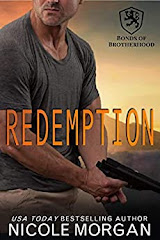Developing The Story Behind The Book
When I started writing for publication over ten years ago, I had no idea of the difference between a story and a novel. A story can ramble and turn and have no real destination. It doesn’t have to fit into a word count or page limit. It may not have a beginning, a middle and an end.
I usually start crafting a novel by developing the story first. When I began earnest work on my debut novel, Ultimate Justice, A Trey Fontaine Mystery, I knew what I wanted to accomplish, but not how to accomplish it. I knew I had a good story, but giving it a plot, structure, word count, suspense, mystery, and well-rounded characters meant really working on one piece of the problem at a time.
When it started, I had one person in first person POV and the rest in third person POV. As time passed, the person who maintained the first person POV changed. I couldn’t really decide what the novel was about. Was it about the FBI agent? Or the relationships between the characters? Or the crime itself? The lead character changed. I knew how the story would begin and end. I had no idea how to fill the middle with anything other than mud.
Plotting is my weakest skill. I worked on characters, then wrote a couple of chapters, then tried to plot a little, then wrote a little more. The first draft was a real ugly duckling. The plot had huge holes. The timing was way off. Character description changed with no explanation, except that I’d forgotten eye color, or age. But I knew that deep inside that really bad writing was a good novel and a really good story.
My ‘What ifs’ included love and hate, good and evil, flawed and flat out crazy. All those books I’d written before, you know, the ones under the bed, were nothing compared to this. I read books, read articles, talked to authors I admire, and kept trying to increase my skill to a level that would do the novel justice. I think I learned fifty new skills before I finally managed to stumble upon a process that half-way works for me.
My cast of characters increased drastically, and I kept thinking that no editor would buy a newbie’s debut novel if it had too many POV characters, or the plot was too complicated. But I couldn’t help myself. Each character serves a purpose, and I handle POV pretty well. I can’t write an uncomplicated plot. Every character has his or her own story, life, plans and problems. And each character is affected by the actions of the others.
This particular story came from a mixture of my own experiences, including a run in with a serial killer, my education and employment in law and law enforcement, and people I’ve known.
What if a drug-addicted FBI agent had to deal with an old flame while trying to solve three sets of crimes? What if the criminal was very young—a child? What if each character had to face obstacles like prejudice, sexism, drug addiction, abuse, neglect, grief, or some other major ongoing issue to deal with while trying to do their jobs, or not get caught doing something? So the story began chronologically, years before the novel. The story began with the relationships between all the characters. Once each character was fully defined, and set against each other, the plot fell into place, the sagging middle had liposuction, and with a little guidance by a wonderful editor, the end was perfect.
✧✧✧✧✧
Ultimate Justice, A Trey Fontaine Mystery is receiving rave reviews from readers. http://www.ll-publications.com/ultimatejustice.html
The small town of Raven Bayou, Louisiana explodes as old money meets racial tension, and tortured children turn the table on abusive men. FBI Special Agent Trey Fontaine returns home to find the town turned upside down with mutilated bodies. Working with local homicide detectives, Trey is determined to get to the truth. A believer in empirical evidence, Trey ignores his instincts until he stares into the face of the impossible, and has to choose between what he wants to believe and the ugly truth.
A graduate of the University of California and former officer for a large sheriff’s department, RYDER ISLINGTON is now retired and doing what she loves: reading, writing, and gardening. She lives in Louisiana with her family, including a very large English Chocolate Lab, a very small Chinese pug, and a houseful of demanding cats.
She can be contacted at RyderIslington@yahoo.com
or visit her blog at http://ryderislington.wordpress.com
Stop by ll-publications for a full schedule of Ryder's blog tour HERE











